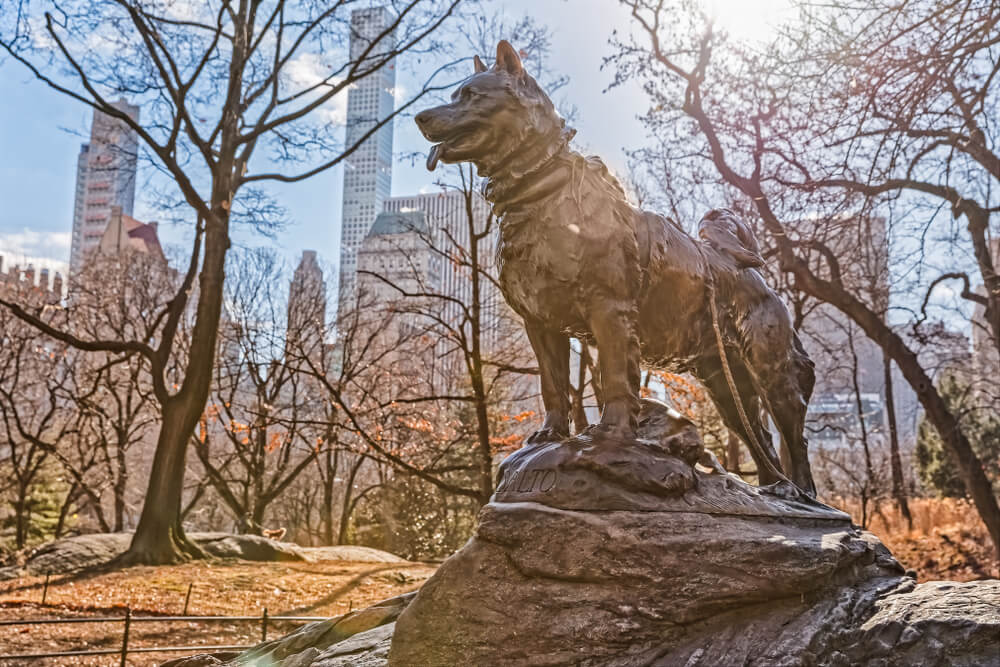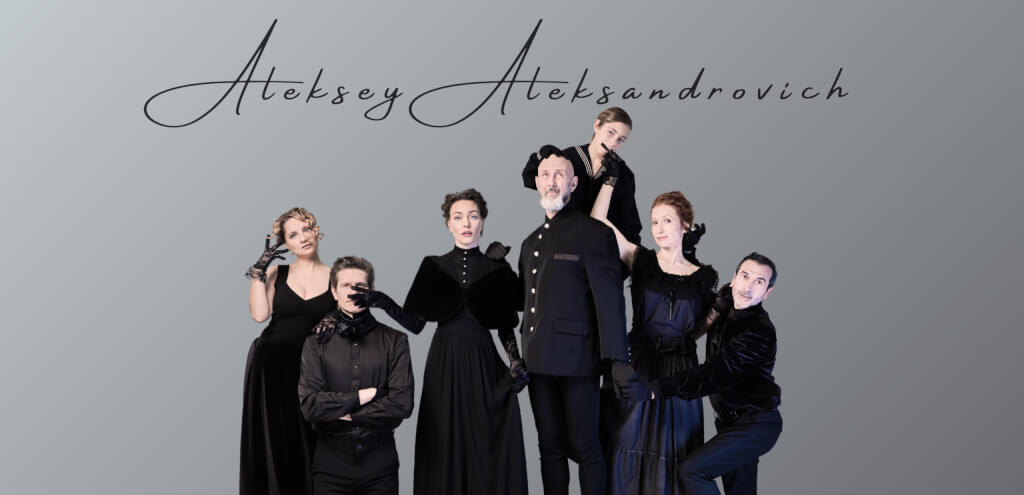Saved the city from death: for which a monument to the Siberian husky was erected in Central Park
'09.05.2020'
ForumDaily New York
In 1925, the tiny town of Nome on the edge of Alaska was struck by an outbreak of diphtheria. To deliver life-saving serum to the city, 20 teams of sled dogs had to overcome more than 1000 kilometers of snow and ice together. However, the feat of one dog first went down in history. Air force.

They say the dog is our best friend. Sometimes she is also our savior.
Of all the dogs that took part in the serum delivery relay to Nome, the two Siberian huskies, Balto and Togo, distinguished themselves the most.
Today, dogs of this breed compete in exciting sleigh races, surpassing many outstanding athletes in physical endurance. How do they do it?
Husky was brought from Siberia by fur trader William Gusak at the beginning of the XNUMXth century, when a gold rush reigned in the northwest of Canada in the Yukon. Gusaka was struck by the breed of these sled dogs used by the Chukchi.
For thousands of years, the Chukchi overcame hundreds of kilometers of Arctic tundra on dog teams. Breeding breeding has created the ideal breed of a sled dog that can withstand the cold and years of hard work.
In 1909, in the same Alaska, Gusak with his dogs took part in the famous dog sled races between the cities of Nome and Kendl with a total length of 657 km. Alaskan Malamute teams have won the competition for many years.
Gusak's Siberian Rats were half the size of the Malamutes, but they were ahead of many local teams and received an honorable third place. The Malamutes bred to carry cargo were tougher, but the huskies pulled the sled faster.
The Siberian Husky Husak turned out to be the gold standard for sled dogs - their size, correct pelvic angle, back length and shoulder width ensure the longest stride possible.
Although hounds are faster than husky dogs, they make big jumps in the air while running. This is a great technique for sprinting, but fatal for harnessing, because the sled will pull them back each time.
The very next, 1910, in the races in Alaska, it was the Siberian husky who came first. The team was led by a driver from Nome, a Norwegian named Leonard Seppala.
His victory will be remembered 15 years later in January 1925, when the health department of Nome faced a crisis - an epidemic of diphtheria.
Diphtheria is a bacterial infection that affects the nose and throat. If left untreated, it can be fatal. This rarely happens today because most people are vaccinated, but in 1925 this was not the case.
The outbreak occurred at the worst time for Nome. The city was cut off from the rest of Alaska in the coldest winter of the last 20 years, and there were no local diphtheria antitoxin reserves.
Without it, city doctors predicted a mortality rate of up to 100%. The nearest whey, which could be delivered by rail, was in Nenan at a distance of 1085 km.
On the subject: We go there for a walk and rest: 5 hidden New York cemeteries that you did not know about
On January 24, Noma’s health department voted unanimously to transport the dog sled from Nenan to Noma.
Using the US Post, which regularly used sled dogs to deliver correspondence to Alaska, the route was divided between 20 teams. Seppala had to run the penultimate stretch from Shatulik to Golovin.
The mail service usually completed this route in 25 days, but at that time it was too long. In severe weather conditions, the serum could withstand only six days. Dogs had to run a distance in less than a quarter of normal time.
The first task was simple - not to freeze to death.
Compared to other breeds, Siberian huskies have an undercoat of very thin, twisted hairs that keep the skin warm, like a light down jacket, explains veterinarian Kelly Credil.
When dogs sleep at night, they curl up in a ball, covering their nose with their fluffy tail. It warms the air they breathe.
In addition, unlike other breeds, husky wool in winter practically does not grow and does not shed. This allows the animal’s body to retain valuable proteins and fats necessary for hair formation.
Many of the mushers (drivers) who took part in the Mercy Race frostbitten their hands and face. To protect vital organs, the human body sends blood to them, leaving the limbs vulnerable.
Unlike humans, dog paws do not lose heat. The only area on the body of sled dogs that they can frostbite is the nipples.
All these properties helped Leonard Seppal's Siberian husky to survive during the race. They had to run 170 km from Nome towards the last participant in the relay.
The validity of the serum was exhausted, and Seppala decided to shorten the path through the Norton Sound Bay on ice. This was a risky decision because the ice cover was unstable.
In addition, the team was covered by a blizzard. Seppala did not see anything around.
To circumvent the deadly areas of open water, the driver completely entrusted the management of his leading dog Togo.
Togo did the job admirably. The dog's whiskers, or vibrissa, feel changes in the airflow. The key role is played by special pillow sensors located at the base of the vibrissae. Husky has more such pads than any other breed.
Thanks to centuries of breeding, husky dogs are very smart. The Chukchi needed dogs that could perfectly navigate in the snow and on ice.
Another trait that was extremely important to sled dogs and which Seppala hoped for, as did the other drivers, was the ability to work as a team.
In order to raise good dogs for harness, you needed a playful breed of dog.
“Pulling the sled is essentially a game because the dog is not immediately rewarded,” explains dog researcher Raymond Coppinger.
“Playfulness is also an important social trait that promotes teamwork, strengthens the human-dog bond, and reduces aggression among animals,” he adds.
To breed such a breed, the Chukchi systematically selected smart and playful dogs - the selection helped to significantly reduce the aggression in Siberian huskies.
On the subject: 8 Ways to Explore Central Park Without Leaving Home
Working as a team, the Seppal dogs crossed a dangerous path through the bay and transported the serum 146 km closer to the city of Nome.
The last leg of the relay was performed by the musher Gunnar Kaasen - his team was led by a Siberian husky named Balto. They delivered the serum to Noma half a day before its expiration date and saved 10 lives.
Race of mercy brought Siberian husky worldwide fame. Balto was immortalized in a bronze statue that stands in Central Park in New York, which, however, is quite unfair, because he was only one of the many dogs that coped with this difficult task.
In 1930, the American Kennel Club recognized the breed of Siberian Husky, setting very specific criteria for it.
“Every breed usually starts with a very small population,” explains Coppinger. - All Siberian huskies come from only a few individuals from nurseries in New Hampshire and Quebec. These were the dogs that Seppala called "Siberians".
The transition to the breeding system of breeding meant that the Siberian husky will no longer be the champions of running in a harness.
“The dogs that win competitions today are not purebred huskies, but a cross between Siberian and Alaskan huskies, which are the result of crossing the best Siberians, hounds, malamutes, collies and other breeds,” explains geneticist (and champion musher) Heather Huson of Cornell University in Ithaca, New York.
Today's breed of Siberian husky is different from their ancestors, but this also applies to any other dog breed. Dachshunds have a longer body than 200 years ago, pug noses are now more flattened.
New breeds in the competition displace the old ones, as happened with the Alaskan husky.
Now these dogs compete only for fun, and almost a hundred years ago their ancestors saved the city from extinction.







